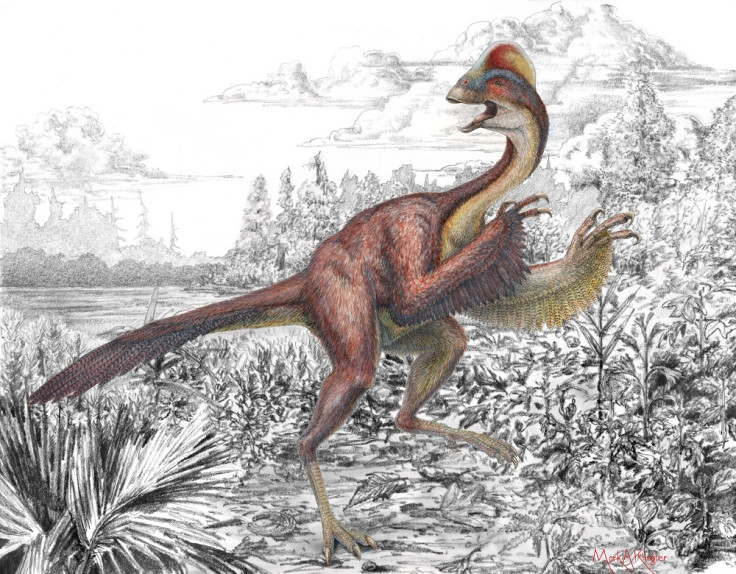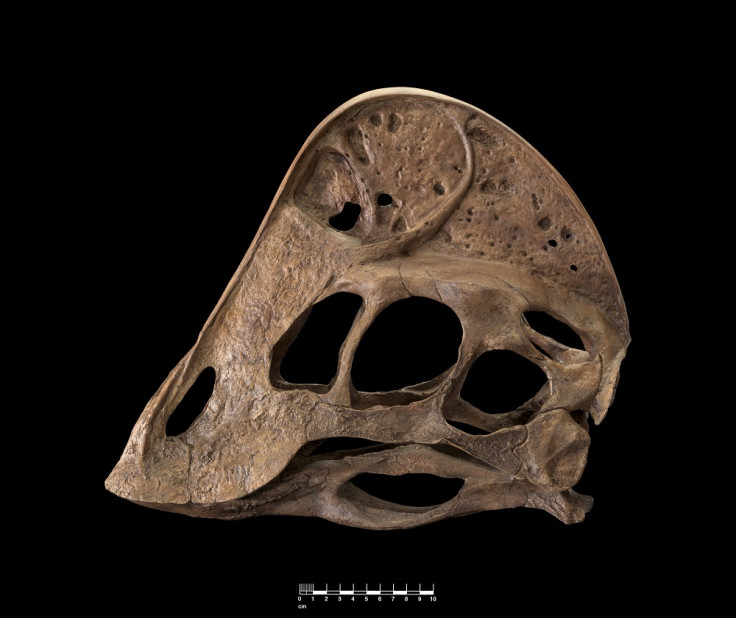Dinosaur Discovery: 66 Million Year Old 'Chicken from Hell' Fossil Found in US

A new species of bird-like dinosaur which scientists have dubbed a "chicken from hell" has been discovered by researchers from the University of Utah and Carnegie and Smithsonian museums.
The 500-pound dinosaur, which roamed North and South Dakota alongside Tyrannosaurus rex around 66 million years ago, has been called Anzu Wyliei.
It is named after a bird-like demon called Anzu in Mesopotamian mythology and Wyliei, after the dinosaur-loving grandson of a Carnegie Museums of Pittsburgh trustee.
Three partial skeletons of the dinosaur were excavated from the uppermost level of the Hell Creek rock formation in North and South Dakota, a formation known for abundant fossils of Tyrannosaurus rex and Triceratops.

The new dinosaur is estimated to have been 11.5ft long, almost 5ft tall at the hip and to have weighed an estimated 440 to 660 pounds.
It has also been described as having had long, sharp claws.
Matt Lamanna, lead author of the study from the Carnegie Museum of Natural History in Pittsburgh, said: "We jokingly call this thing the 'chicken from hell,' and I think that's pretty appropriate."
Emma Schachner, a co-author of a new study of the dinosaur, added: "It was a giant raptor, but with a chicken-like head and presumably feathers. The animal stood about 10 feet tall, so it would be scary as well as absurd to encounter."
She explained that Anzu is one of the youngest oviraptorosaurs known, as it lived close to the asteroid strike on Earth 65 millions years ago, which was blamed for the extinction of dinosaurs.
Schachner said: "I am really excited about this discovery because Anzu is the largest oviraptorosaur found in North America. Oviraptorosaurs are a group of dinosaurs that are closely related to birds and often have strange, cassowary-like crests on their heads."
The researchers believe Anzu was an omnivore, eating vegetation, small animals and perhaps eggs while living on a wet floodplain.
They also suggested the dinosaur got into some scrapes, as indicated by evidence of a broken and healed rib and a toe trauma.
Having a nearly complete skeleton of Anzu Wyliei sheds light on a category of oviraptorosaur theropod dinosaurs named caenagnathids, which have been known for a century from limited fossil evidence.
The Anzu Wyliei fossils were discovered some years ago, but it took more time for researchers to study the fossils and write and publish a formal scientific description.
Schachner said naming the creature was a very exciting moment: "Naming a dinosaur is one of those things I've wanted to be involved in since I was a kid."
© Copyright IBTimes 2024. All rights reserved.






